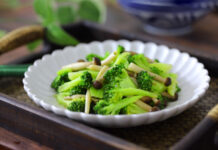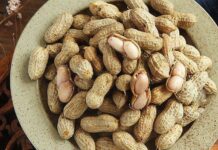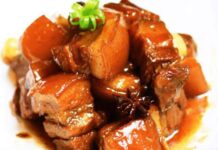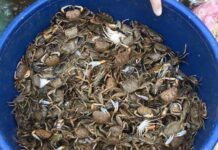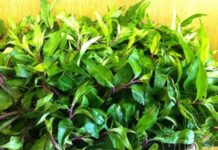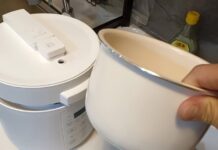From Wild Weed to Longevity Veggie: The Hunt for Portulaca oleracea
In the Vietnamese countryside, Portulaca oleracea, or purslane, is a familiar sight. This tiny weed, creeping close to the ground, requires minimal care and thrives with just a bit of rainwater. Yet, it has earned the moniker “longevity veggie” due to its astonishing nutritional benefits that surpass its unassuming appearance.
Purslane, also known as “ma xi hien” in local dialect, grows wild in moist areas, along rice paddy edges, under eggplant bushes, by walls, or fence sides. With no cultivation or fertilizer needed, this resilient plant proliferates with the changing seasons. For many, purslane evokes memories of humble rural meals—a plate of boiled greens dipped in fish sauce, evoking a refreshing and nostalgic flavor of childhood.
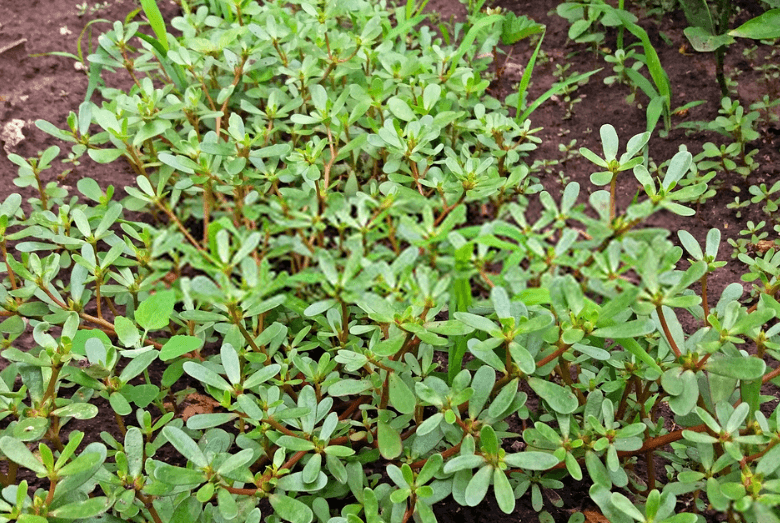
Purslane is easily recognizable by its plump, succulent stems, small oval-shaped leaves that crawl close to the ground. When boiled, it has a mild tangy taste, refreshing without any bitterness. The pinkish-hued broth from boiling purslane is subtly fragrant, offering a cooling and detoxifying effect—a testament to the old adage, “Slightly sour, yet so refreshing, wild greens in summer ward off boils and sores.”
Modern medicine has validated the exceptional benefits of purslane. Beyond being a humble vegetable, it is now recognized as a natural herbal remedy, aiding in the prevention and treatment of various chronic ailments.
Exceptional Nutritional Profile Elevates Purslane to ‘Superfood’ Status
Research reveals that purslane boasts a dense concentration of essential nutrients, particularly Omega-3 fatty acids, which are highest among leafy green vegetables. Additionally, it is rich in potassium, vitamins A, C, and E, iron, and antioxidants. These compounds offer the following health benefits:
- Regulate blood pressure and enhance blood circulation.
- Lower bad cholesterol and protect against cardiovascular diseases.
- Nourish and protect nerve cells, providing support for Parkinson’s disease.
- Fight inflammation, inhibit bacteria, and boost the immune system.
- Cool and detoxify the body, benefiting the liver and skin during hot summers.
- Purslane’s alkaline nature helps balance the body’s pH, aiding digestion and preventing constipation.
From Wild Weed to Urban Garden Favorite: The Rise of Homegrown Purslane
Despite once being considered a “poor man’s vegetable,” purslane has gained popularity among city dwellers who either seek it out at markets or cultivate it in buckets on their balconies or rooftops. Requiring neither fertile soil nor intricate gardening techniques, purslane thrives with minimal care and provides a consistent harvest within weeks.
Many homemakers share that planting purslane is as simple as scattering a few seeds or transplanting a small cutting, coupled with regular watering. They grow this resilient plant not only for its nutritional benefits but also to recapture a taste of their childhood and a piece of their rural heritage in the midst of urban concrete.
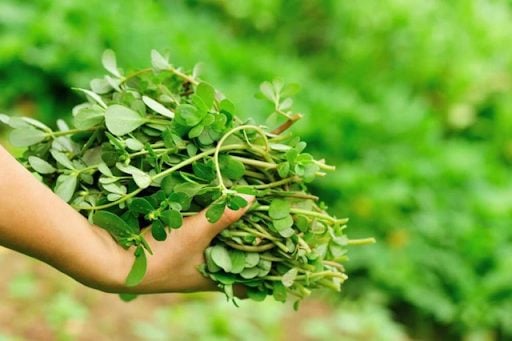
Delicious Purslane Dish Ideas
- Purslane is incredibly versatile and can be prepared in numerous familiar ways:
- Boiled purslane dipped in ginger fish sauce—a refreshing, cooling summer treat.
- Purslane soup with shrimp or crab—a sweet and nutritious broth.
- Stir-fried purslane with garlic or scrambled eggs—a quick, simple, and tasty dish.
- Purslane salad with a tangy-sweet dressing—a delightful summer palate cleanser.
Additionally, purslane blends beautifully with other greens in assorted vegetable soups, adding a distinctively Vietnamese flavor.
Precautions When Consuming Purslane
Although purslane is highly beneficial, those with cold body constitutions, weak digestion, or pregnant women should exercise caution when consuming large amounts due to its cooling properties, which may cause stomach discomfort. It is advisable to consume purslane in moderate quantities and ensure thorough cooking for optimal safety.
From a humble weed to a revered “longevity veggie,” purslane has earned a new reputation. It symbolizes enduring health and resilience. In the quest for natural nutrition, purslane rightfully deserves a place in every small garden and on the dining tables of modern-day Vietnam.











